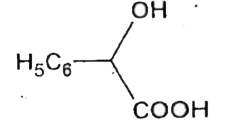during aerobic respiration which of the following conversion undergo both dehydrogenation and decarboxylation
PGALrarr BPGAL
Succintly CoA -rarr Succinic acid
Pyruvic acid -rarr Acetyl CoA
Malic acid --rarr Oxaloacetic acid
To solve the question regarding which conversion during aerobic respiration undergoes both dehydrogenation and decarboxylation, we can follow these steps:
Step 1: Understand the Terms
- Dehydrogenation: This is a chemical reaction that involves the removal of hydrogen from a molecule, often resulting in the formation of NADH or FADH2.
- Decarboxylation: This refers to the removal of a carboxyl group (COOH) from a molecule, releasing carbon dioxide (CO2).
Step 2: Identify the Processes in Aerobic Respiration
Aerobic respiration consists of several key processes, including:
- Glycolysis
- Pyruvate oxidation
- Citric Acid Cycle (Krebs Cycle)
- Electron Transport Chain
Step 3: Focus on Pyruvate Oxidation
The conversion of pyruvate to acetyl-CoA is a crucial step that occurs after glycolysis and before entering the citric acid cycle. This process takes place in the mitochondria and involves:
- Decarboxylation: One CO2 molecule is released.
- Dehydrogenation: NAD+ is reduced to NADH.
Step 4: Analyze the Options
From the provided options, we need to identify which conversion involves both dehydrogenation and decarboxylation. The conversion of pyruvate to acetyl-CoA fits this criterion.
Step 5: Conclusion
Thus, the correct answer is that during aerobic respiration, the conversion of pyruvate (pyruvic acid) to acetyl-CoA undergoes both dehydrogenation and decarboxylation.
Final Answer
The conversion that undergoes both dehydrogenation and decarboxylation during aerobic respiration is the conversion of pyruvate to acetyl-CoA.
---
- Dehydrogenation: This is a chemical reaction that involves the removal of hydrogen from a molecule, often resulting in the formation of NADH or FADH2.
- Decarboxylation: This refers to the removal of a carboxyl group (COOH) from a molecule, releasing carbon dioxide (CO2).
Aerobic respiration consists of several key processes, including:
- Glycolysis
- Pyruvate oxidation
- Citric Acid Cycle (Krebs Cycle)
- Electron Transport Chain
The conversion of pyruvate to acetyl-CoA is a crucial step that occurs after glycolysis and before entering the citric acid cycle. This process takes place in the mitochondria and involves:
- Decarboxylation: One CO2 molecule is released.
- Dehydrogenation: NAD+ is reduced to NADH.
From the provided options, we need to identify which conversion involves both dehydrogenation and decarboxylation. The conversion of pyruvate to acetyl-CoA fits this criterion.
Thus, the correct answer is that during aerobic respiration, the conversion of pyruvate (pyruvic acid) to acetyl-CoA undergoes both dehydrogenation and decarboxylation.
The conversion that undergoes both dehydrogenation and decarboxylation during aerobic respiration is the conversion of pyruvate to acetyl-CoA.
Topper's Solved these Questions
Similar Questions
Knowledge Check
Which of the following compounds undergo easy decarboxylation?
A B
B C
C D
D
Which of the following compounds easily undergoes decarboxylation?
ACCI3COOHBβ-Keto carboxylic acidCHCOOHDCH3COOHWhich of the following acid undergoes decarboxylation easily ?
A B
B C
C D
D
Which of the follolwing compounds undergoes easy decarboxylation on heating ?
View SolutionWhich of the following will undergo decarboxylation easily?
View SolutionWhich of the following undergo easy decarboxylation ?
View SolutionDuring aerobic respiration, acetyl CoA is synthesised in
View SolutionDuring aerobic respiration, one molecule of glucose produces:
View Solution

